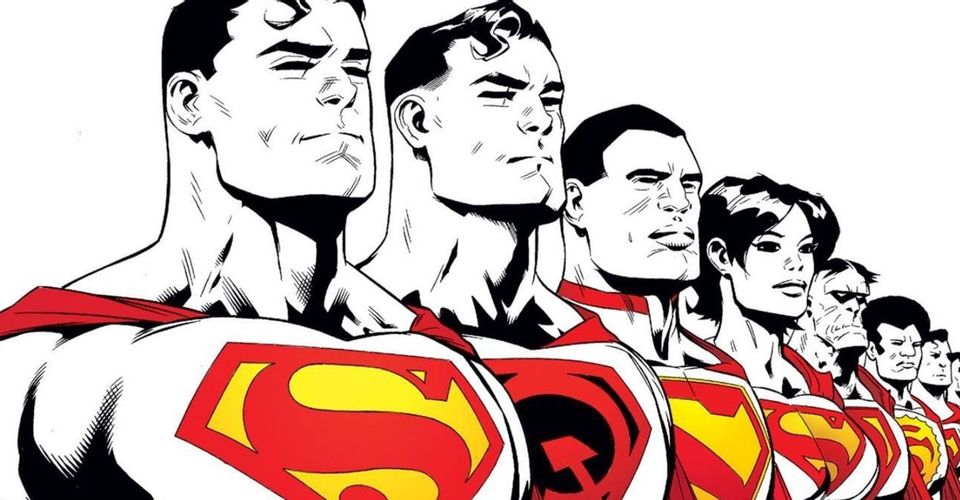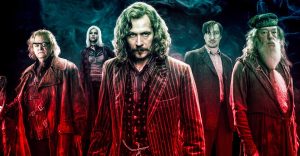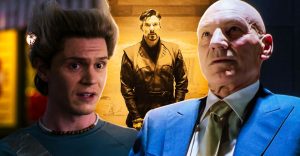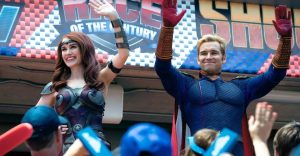How Many Versions of Superman Have Been in DC Comics?

How many versions of Superman have there been in the comics? The answer is: a bunch. Since his first appearance in the first issue of Action Comics in 1938, there have been numerous versions of the Man of Steel, ranging from conventional pseudo-copies to the downright bizarre. Keeping track of them can be a daunting feat, but in this article, we’re going to give it a shot.
Every comic fan knows Superman’s origin: rocketed to safety as an infant from the dying planet Krypton to Earth. There, under the yellow sun, he acquired fantastic powers and dedicated himself to truth, justice, and the American Way, eventually becoming Earth’s greatest hero and a living symbol of hope. It’s a simple narrative, and yet one that’s undergone almost countless iterations in the comics.
Conventional Supermen

Let’s start by looking at the more “conventional” Supermen; that is, those who stick close to Clark Kent’s classic origin story. Kal-L is the very first Superman who appeared in Action Comics #1, though he exists on Earth-2 in the DC Multiverse. Compared to the other versions that came later, Kal-L was not as powerful, particularly in terms of speed and strength, but could still hold his own against the Anti-Monitor, as he did in the final issue of Crisis on Infinite Earths.
Following Kal-L was Kal-El, the Earth-One Superman. His adventures were set during the Silver Age of Comics; he was more powerful than his predecessor, able to fly faster than light and even move planets out of orbit. After the Crisis on Infinite Earths he yielded way to the Post-Crisis Superman, who followed the Earth-One model closely with some slight variations: he was a fetus when he left Krypton and was born on the flight to Earth. He was also less powerful than his Earth-One predecessor. This Superman hung around for 25 years, until Flashpoint and the arrival of the New 52. The New 52 Superman was younger and less experienced than any that had come before but was still quite powerful – on par with the Post-Crisis Superman. Ironically, the New 52 Superman died and was replaced by a time-displaced Post-Crisis Superman, and this is the version currently appearing in DC Comics.
Each of these Supermen appeared in DC’s mainstream comics, meaning they got in all kinds of adventures that produced cloned variants. Bizarro, a freakishly distorted version of Superman and Superboy aka Kon-El, are the two most popular. Along those lines are Superman Red and Superman Blue, created when Superman was exposed to strange energies and split into two – one wearing a red uniform and the other a blue one – hence the names.
Supermen From All Ages

As well as the mainstream depiction of Superman, there have been plenty of incarnations from alternate time periods. The classic Superboy is arguably the most popular. Appearing seven years after Superman’s debut, Superboy showed fans the “adventures of Superman when he was a boy.” This expanded the mythology of the character greatly, introducing elements such as Krypto the Super-Dog and the town of Smallville. There have been multiple versions of Superboy, including the aforementioned Kon-El, but the most famous is Superboy-Prime, a petulant version whose Earth was destroyed in the Crisis.
Speaking of Superboy, the Post-Crisis Superman’s son Jonathan Kent goes by that name now, but recent issues of Legion of Super-Heroes have shown he will not just become “Superman” but the version history considers the Superman. Jonathan Kent’s early days as Superman are a focus of DC’s Future State, which sees him become the Superman of Metropolis when his father is banished from Earth.
Also, in the future is Kal Kent, the Superman from the 853rd century. First appearing during DC One Million, he is a direct descendant of Superman; he has many of the standard Superman powers but with a few new ones thrown into the mix, such as ESP. All-Star Superman by Grant Morrison and Frank Quitely introduced Klyzyzk Klzntplkz, the Superman of the 5th Dimension, and a friend and ally to Kal who traveled back to give Clark Kent – the original and best – some more time with his father.
Multiversal Supermen

The Multiverse – many different possible realities existing side by side – is almost as much a part of DC Comics as Superman himself. Many of DC’s mega events involve some dire threat to the Multiverse, and numerous Supermen have come to its defense. Superman is treated an archetype in the Multiverse – the metaphysical forebear of characters like Shazam and Captain Carrot – but since these characters often verge on being their own people – for example, Shazam is considered the ‘Superman’ of his Earth despite having few actual similarities and an independent publishing history – we’ll only cover those with the strongest ties.
Many of these versions exist because of a slight variation in origin. The Superman of Red Son came from a universe where his rocket landed in Soviet Russia instead of Kansas; in Speeding Bullets, the rocket was found by the Waynes, who raised a young Kal-El until their murder, leading to a truly unique Superman/Batman hybrid. Some versions have seen him as a Nazi and others where he was raised by wolves. There are also versions of Superman from across the Multiverse that involve him landing in a different time period. For instance, the Superman of Kingdom Come is from a dystopian future, whereas the Superman of New Frontier is from the early 1960s.
Calvin Ellis, the Super-President of Earth-23, is one of the purest expressions of the Superman archetype, having become a Multiversal hero who handles problems beyond his own reality. Created by Grant Morrison and Doug Mahnk – inspired by former president Barack Obama – his origin largely mirrors the classic Superman story, only instead of becoming a reporter, Calvin becomes President of the United States. The Superman of Earth-9 is Harvey Dent. Like Calvin, he’s African-American, gaining fantastic powers through a super-soldier program as an infant. In fact, Superman also helped create a Marvel super-soldier; when the two universes briefly combined, Steve Rogers’ was given a mixture derived from Kal-El’s DNA, creating the Amalgam Hero Super Soldier.

Frank Miller’s Superman from The Dark Knight Returns was once a future version of the modern Clark, but is now considered a separate version out in the Multiverse, with Superman: Year One imagining a more aggressive Clark landing in the modern day. Of course, even in the Multiverse, it doesn’t get much more bizarre than Super Squirrel. Introduced in the pages of Captain Carrot and His Amazing Zoo Crew, Super Squirrel is a resident of Earth C-Minus; on this Earth, there are anthropomorphic versions of the Justice League, called Justa Lotta Animals. Super Squirrel is just like Superman in every way, but… he’s a cartoon squirrel.
There have been almost countless variations of Superman in DC Comics, with each offering a new perspective from which to view the essential elements of the character. Likewise, while many fans think there has always been a single, mainstream Superman, DC’s Multiversal structure actually means there have been several, each bringing something slightly new and different to the character, from boundless Golden-Age optimism to the modern strains of parenthood. It’s a testament to what Superman means to his fans that he can be read and reimagined in so many ways, and it’s likely there’ll be even more in the future as the character continues to adjust to the culture around him and the stories that shape his world.
About The Author

















